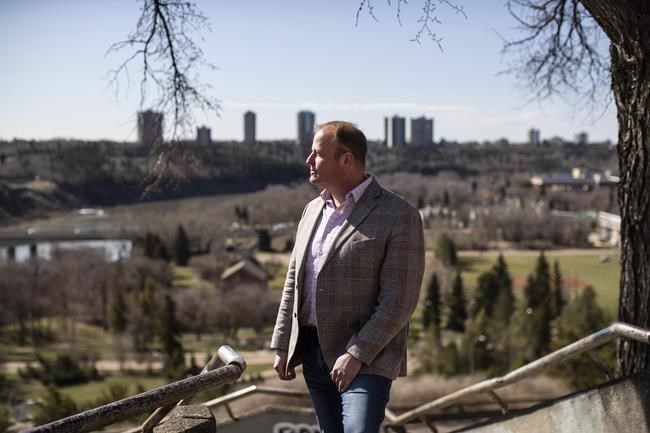Residents and visitors could one day be using cable cars to cross rivers in two central Alberta cities.
A 350-metre urban ropeway, also known as a gondola, has been proposed to connect Red Deer's business district with the Bower Ponds recreation area.
"In Red Deer, it's really simple. There are two stations. It crosses the Red Deer River," said Jeffrey Hansen-Carlson, president of Prairie Sky Gondolas, which has said it would invest $25 -million in the project.
Prairie Sky also wants to string cable cars across the North Saskatchewan River between downtown Edmonton and Whyte Avenue, a popular street with bars, restaurants and stores. Geotechnical and environmental assessments are being done and public input is being gathered through meetings with Indigenous communities and others interested in the project.
The projects are two of many proposed across North America as a way to move people across waterways or get tourists up mountainsides.
Steven Dale is an urban planner who created The Gondola Project website and has consulted on many proposals. He said interest in urban ropeways has been growing steadily.
"Five years ago, the vast majority of my business was outside of North America," Dale said. "Today, it's probably 85 to 90 per cent in North America.
"Beyond the systems you have heard of, there are numerous other cities that are looking at this and discussing this very seriously."
Dale said cities have started to realize gondolas can be cheaper than other transit, can be built over less time and can be used to quickly move people from one spot to another.
"No one likes to do a commute … so the shorter and more predictable it is, the better."
Toulouse, Grenoble and Paris in France are fully integrating gondolas into their transit networks, Dale said.
A similar idea is being considered in Burnaby, B.C., where city council in January endorsed a gondola connecting the rapid-transit SkyTrain lines to Simon Fraser University.
"The … gondola project will create a safe and reliable transit option for Burnaby residents travelling to and from Burnaby Mountain," Mayor Mike Hurley said in a news release at the time.
The project is part of council's 10-year vision that guides priorities and investments in transit.
Dale said gondolas in Latin America "spread like wildfire" once the first integrated ones were built.
"Right now, North America is starting to pick up on it and it's starting to spread here"
SJC Alliance, the company where Dale works, is involved in a gondola project in Los Angeles and in a study for another one in Tampa Bay, Fla.
"Think about the absurdity of this. We are talking about using a ski lift as public transit in Florida," he said. "It's totally ridiculous, but that's actually a good thing, because the ridiculousness of it gets people's attention."
Ironically, Dale said, it's only Canadians who say: "We have snow. We have ice. We have wind. We have winter. How does it work in winter?
"It's a ski lift. How do you think it works in winter? You take it out of the mountains and put it into a city and people's minds go screwy."
There are already gondolas in Western Canada for tourists and skiers, but others are being considered in the Alberta mountain towns of Banff and Canmore. Developers want to build cable cars that would carry people to the tops of mountains from the townsites.
In Canmore, a proposal for a gondola at Silvertip Resort is before the public until the middle of June to set the terms for an environmental review. The project would connect the resort to the summit of Mount Lady MacDonald.
A gondola to take skiers and hikers from the Banff townsite to the summit of the Mount Norquay ski resort was rejected in 2019 by Parks Canada. The resort's owners, however, told Banff town council last August that they still hope to build a smaller version from the town to the mountain's base.
Back in Edmonton, Hansen-Carlson said an urban gondola can be a tourist draw, but it can also be a transportation solution.
"As a piece of infrastructure, simply moving people, its day has come," he said. "Around the world today, there are about 200 urban ropeways successfully operating.
"So, we are not a pioneer globally, but we definitely are in the North American context."
This report by The Canadian Press was first published May 1, 2022.
Colette Derworiz, The Canadian Press



